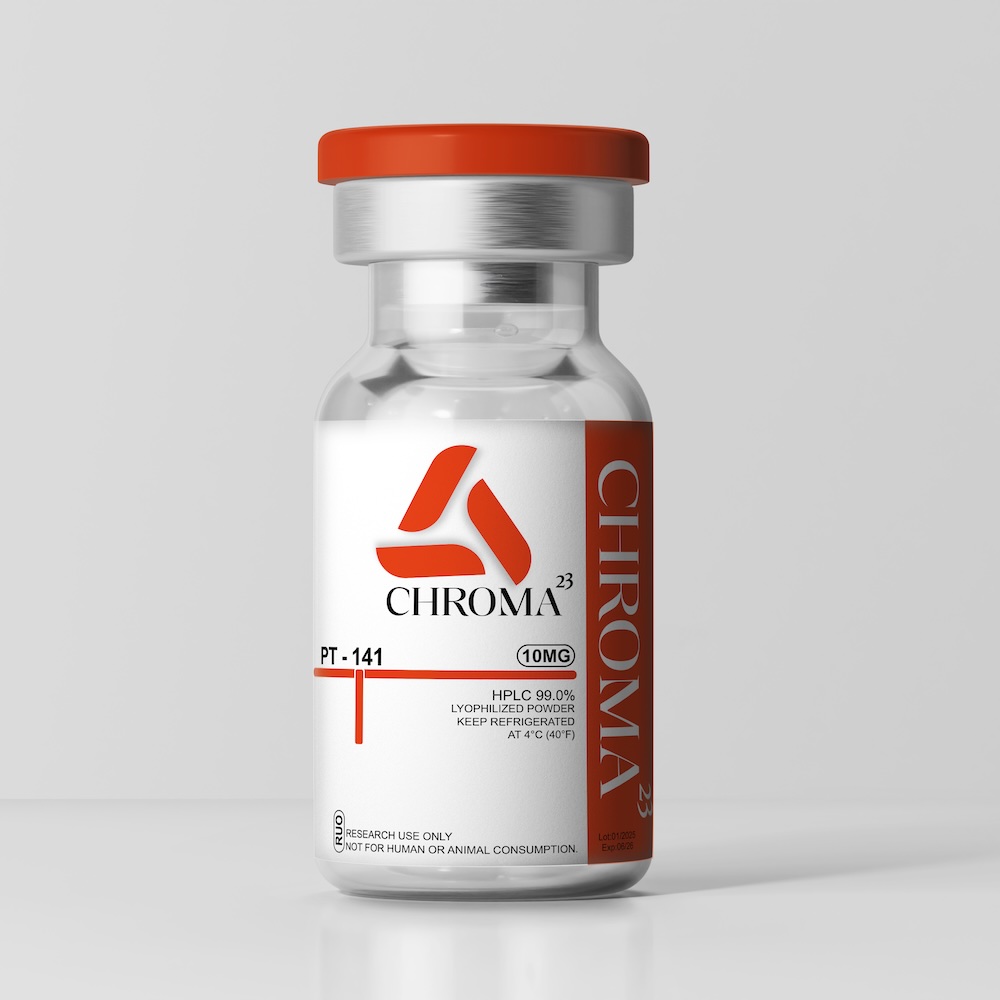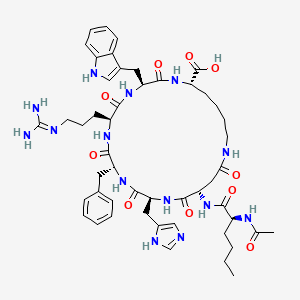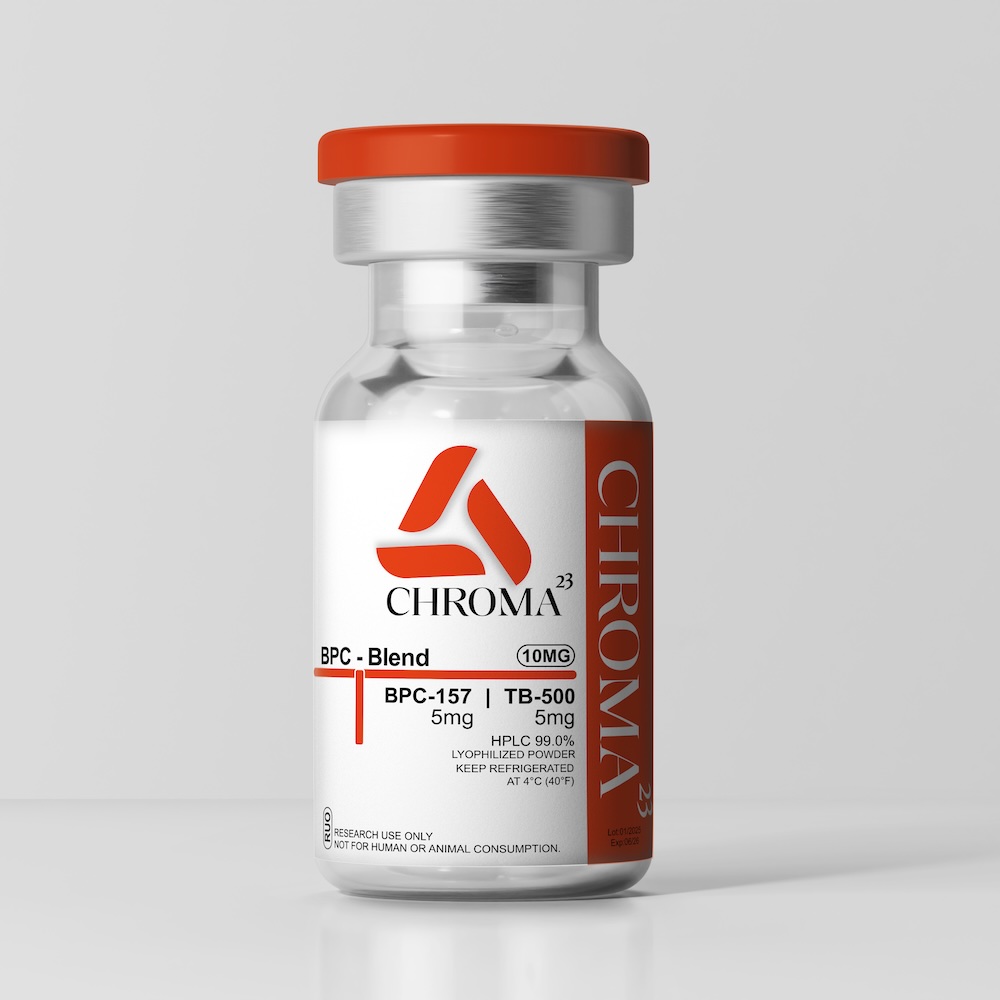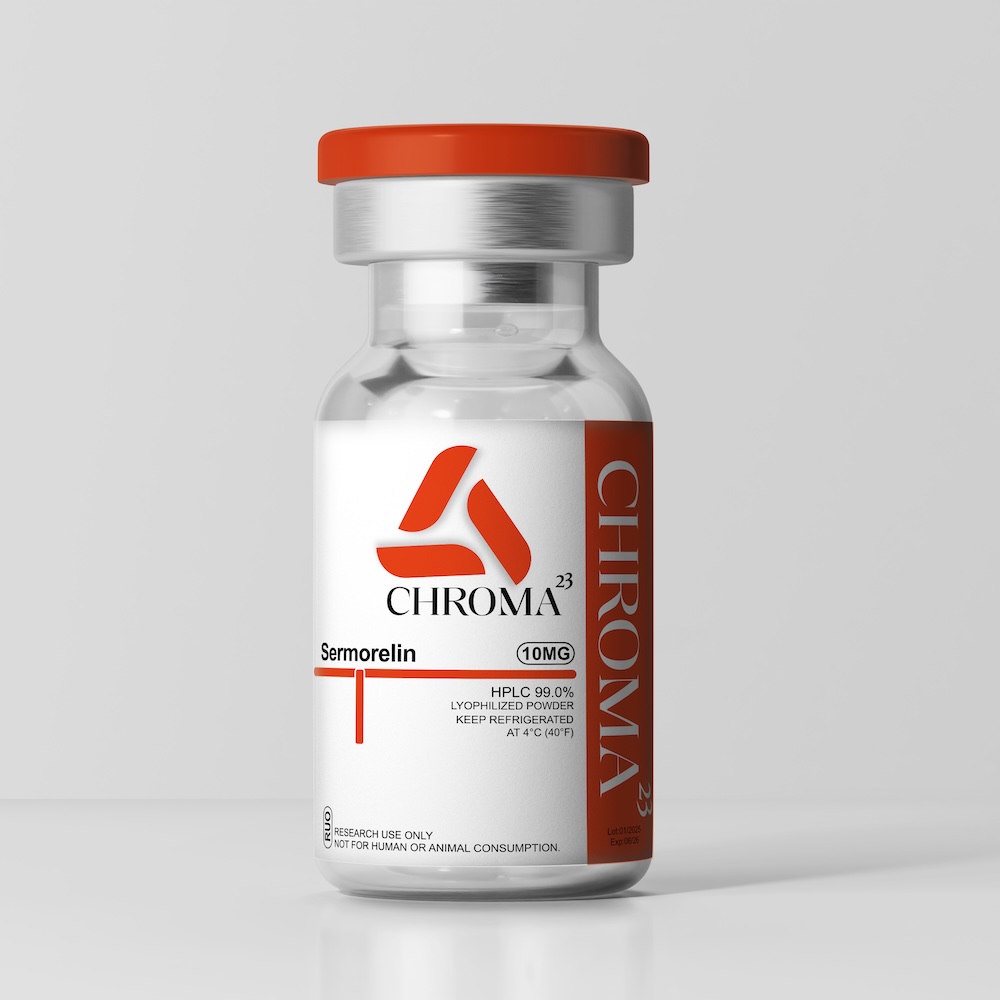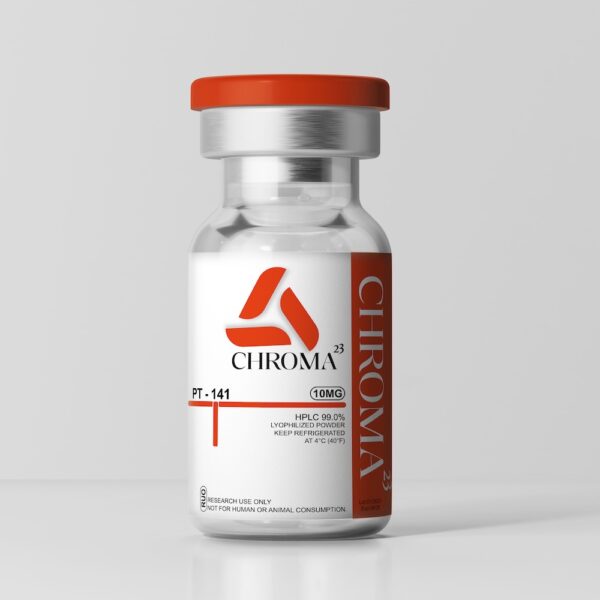PT-141 Peptide Description
PT-141 (bremelanotide) is a synthetic peptide analogue of alpha-melanocyte-stimulating hormone (α-MSH) that acts on melanocortin receptors, particularly MC3R and MC4R, in the central nervous system. PT-141 operates via a unique mechanism distinct from peripheral-acting agents like phosphodiesterase type 5 (PDE5) inhibitors. This action is believed to stimulate sexual arousal and desire by activating neurons in the hypothalamus, a key area involved in sexual function.
PT-141 (Bremelanotide) Structure
Molecular Formula: C50H68N14O10
Molecular Weight: 1025.2 g/mol
PubChem CID: 9941379
Synonyms:
- Bremelanotide
- 189691-06-3
- PT-141
- UNII-6Y24O4F92S
- Bremelanotida
Research Areas:
- Male and Female Sexual Dysfunction
source PubChem
PT-141 Research
PT-141 has been investigated for its potential therapeutic effects in treating sexual dysfunction in both men and women. It acts primarily on the central nervous system, particularly targeting melanocortin receptors MC3R and MC4R, which are involved in sexual arousal and desire.
Research explores its dual application in treating hypoactive sexual desire disorder (HSDD) in women and erectile dysfunction in men, with studies showing improved sexual desire, arousal, and orgasmic function.
PT-141 and Male Sexual Dysfunction
Clinical studies have demonstrated that PT-141 can induce a significant erectile response in both healthy males and those with mild-to-moderate ED. The response is dose-dependent and the onset of action is rapid, with erections occurring approximately 30 minutes post-administration.1
PT-141 has also shown efficacy in patients who do not respond adequately to phosphodiesterase type 5 inhibitors like Viagra, suggesting it may be a viable alternative or adjunctive therapy.2
PT-141 and Female Sexual Dysfunction
Female sexual dysfunction (FSD) is a prevalent issue affecting approximately 30% of women in North America and Europe, with complex etiologies involving interpersonal, personal, and physiological factors.
Studies have shown that PT-141 selectively stimulates solicitational behaviors in female rats, which are analogous to sexual arousal in humans, without affecting other sexual behaviors such as lordosis or pacing. This indicates a specific effect on appetitive sexual behavior, suggesting its potential use in treating female sexual arousal disorders.3
Preliminary clinical data also support its role in promoting sexual desire and libido in women.4
Neurogenic Effects
Unlike PDE5 inhibitors, which augment genital blood flow via nitric oxide signaling, PT-141’s primary effects are neurogenic. By increasing dopaminergic tone in limbic circuits, it elevates sexual desire and reduces inhibitory signals from serotoninergic systems.5
References
- Diamond, L., Earle, D., Rosen, R., Willett, M., & Molinoff, P. (2004). Double-blind, placebo-controlled evaluation of the safety, pharmacokinetic properties and pharmacodynamic effects of intranasal PT-141, a melanocortin receptor agonist, in healthy males and patients with mild-to-moderate erectile dysfunction. International Journal of Impotence Research, 16, 51-59. https://doi.org/10.1038/sj.ijir.3901139.
- Rosen, R., Diamond, L., Earle, D., Shadiack, A., & Molinoff, P. (2004). Evaluation of the safety, pharmacokinetics and pharmacodynamic effects of subcutaneously administered PT-141, a melanocortin receptor agonist, in healthy male subjects and in patients with an inadequate response to Viagra®. International Journal of Impotence Research, 16, 135-142. https://doi.org/10.1038/sj.ijir.3901200.
- Pfaus, J., Shadiack, A., Van Soest, T., Tse, M., & Molinoff, P. (2004). Selective facilitation of sexual solicitation in the female rat by a melanocortin receptor agonist.. Proceedings of the National Academy of Sciences of the United States of America, 101 27, 10201-4 . https://doi.org/10.1073/PNAS.0400491101.
- Shadiack, A., Sharma, S., Earle, D., Spana, C., & Hallam, T. (2007). Melanocortins in the treatment of male and female sexual dysfunction.. Current topics in medicinal chemistry, 7 11, 1137-44 . https://doi.org/10.2174/156802607780906681.
- Pfaus, J. G., Sadiq, A., Spana, C., & Clayton, A. H. (2022). The neurobiology of bremelanotide for the treatment of hypoactive sexual desire disorder in premenopausal women. CNS spectrums, 27(3), 281–289. https://doi.org/10.1017/S109285292100002X.
ALL ARTICLES AND PRODUCT INFORMATION PROVIDED ON THIS WEBSITE ARE FOR INFORMATONAL AND EDUCATIONAL PURPOSES ONLY.
The products offered on this website are furnished for in-vitro studies only. In-vitro studies (Latin: in glass) are performed outside of the body. These products are not medicines or drugs and have not been approved by the FDA to prevent, treat or cure any medical condition, ailment or disease. Bodily introduction of any kind into humans or animals is strictly forbidden by law.

